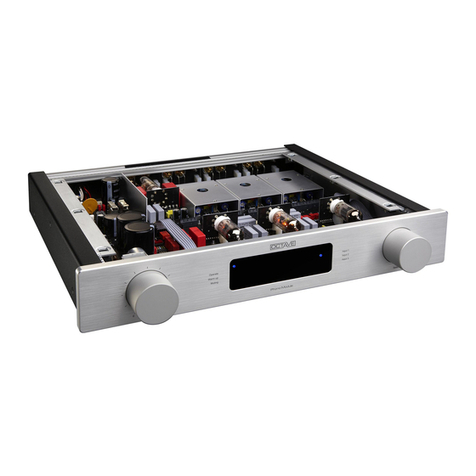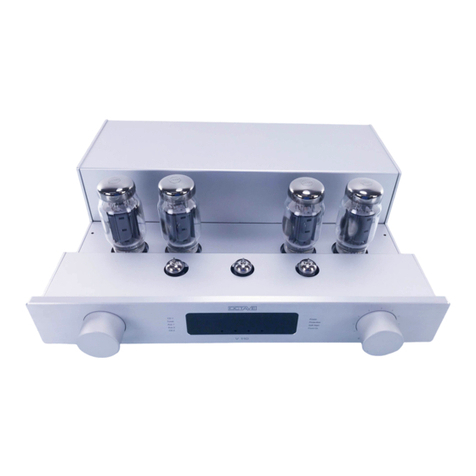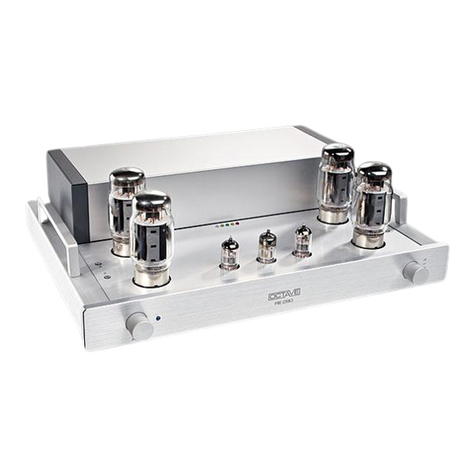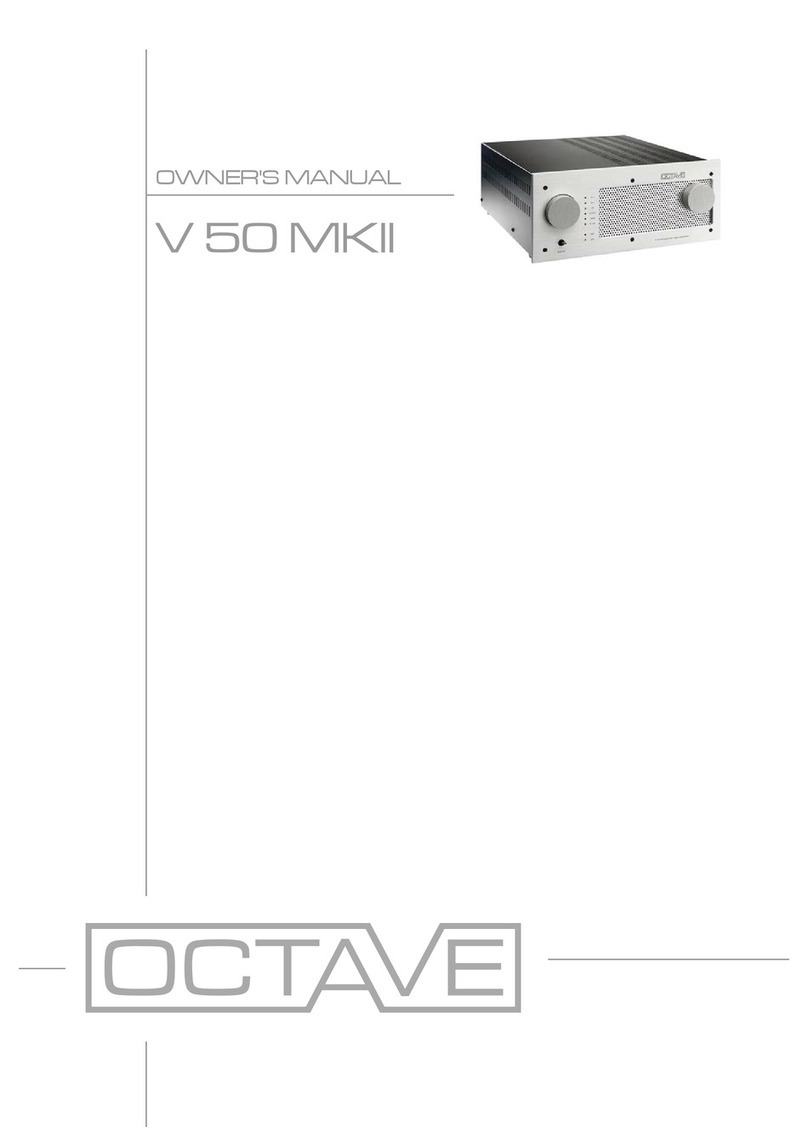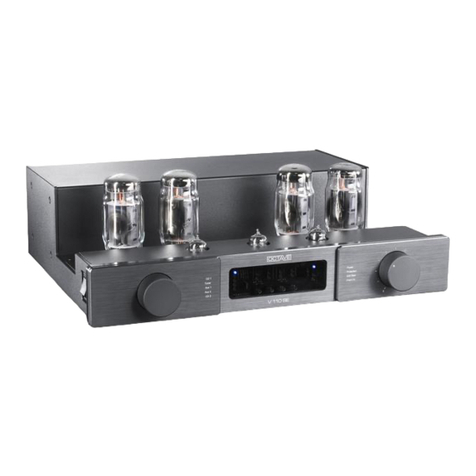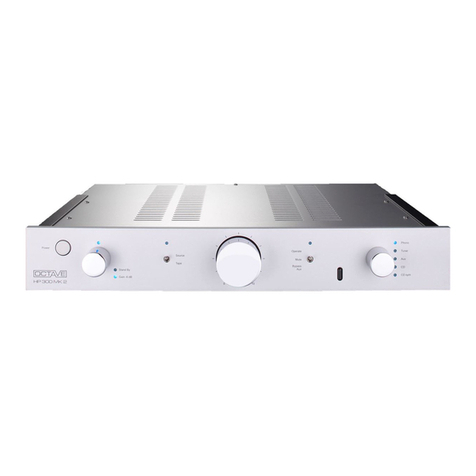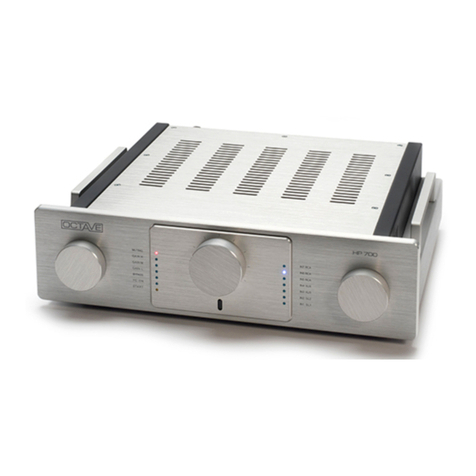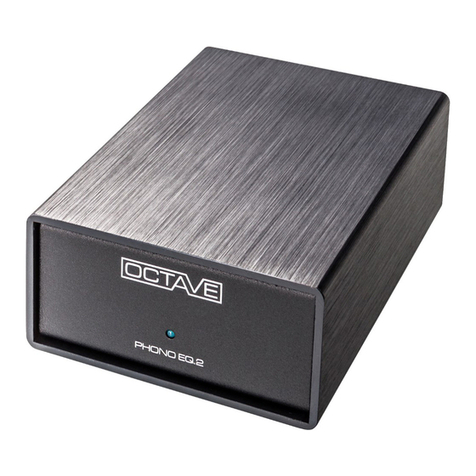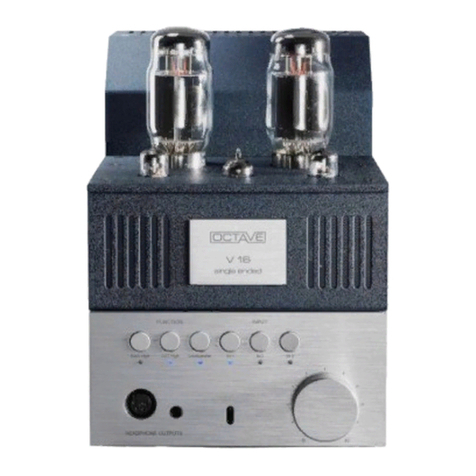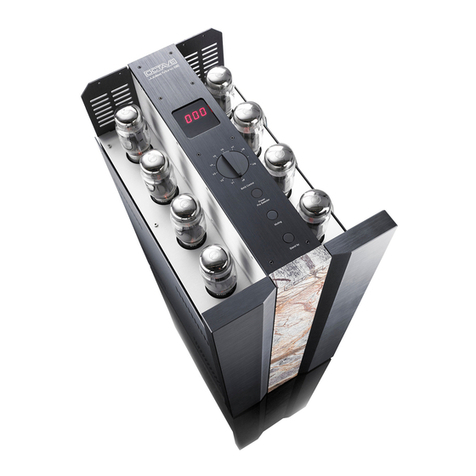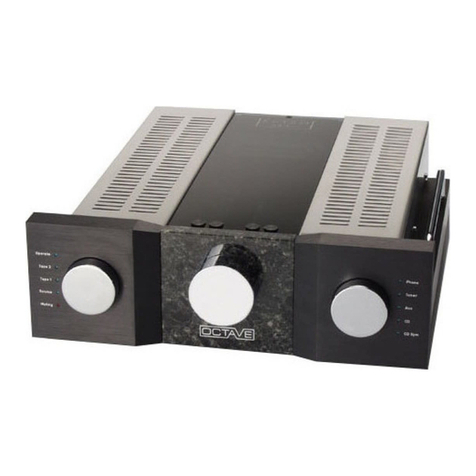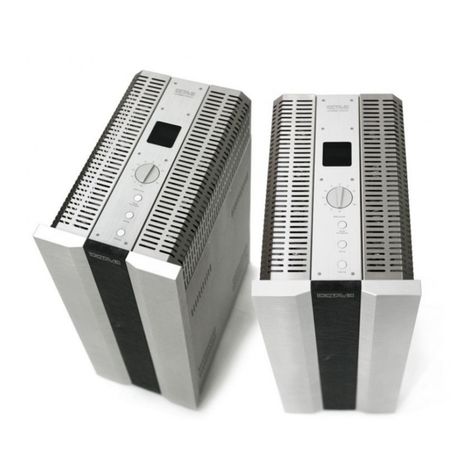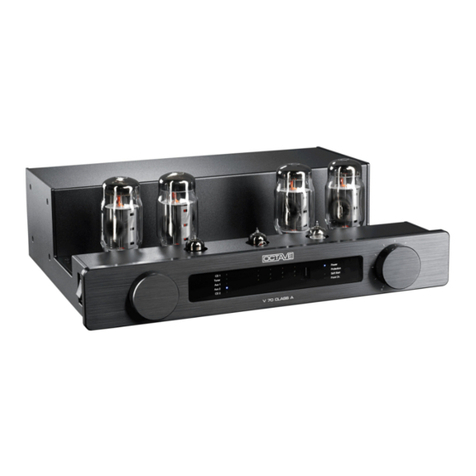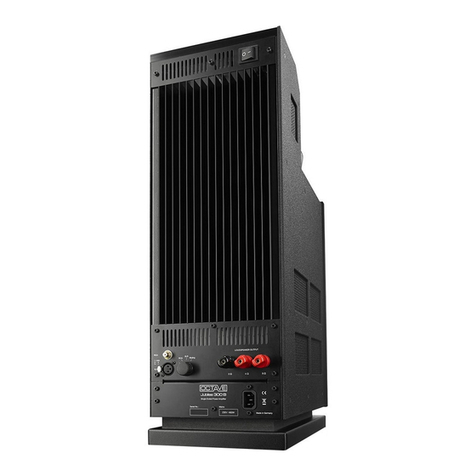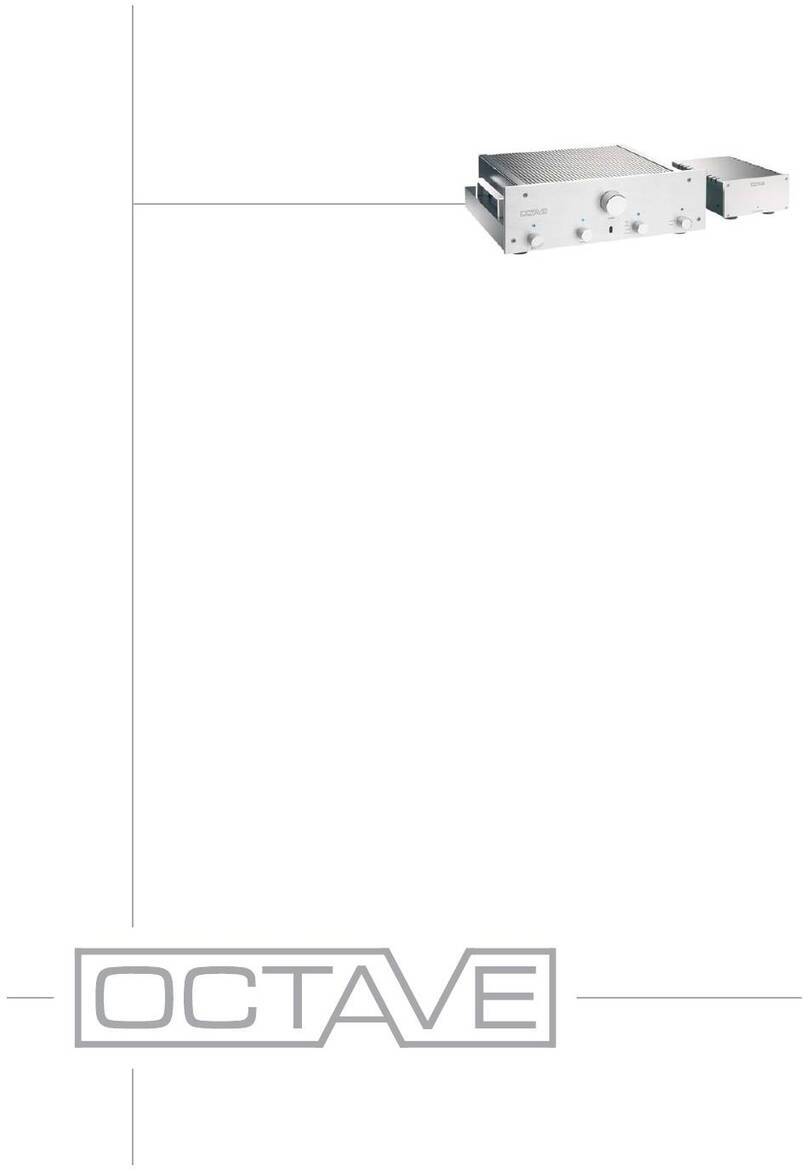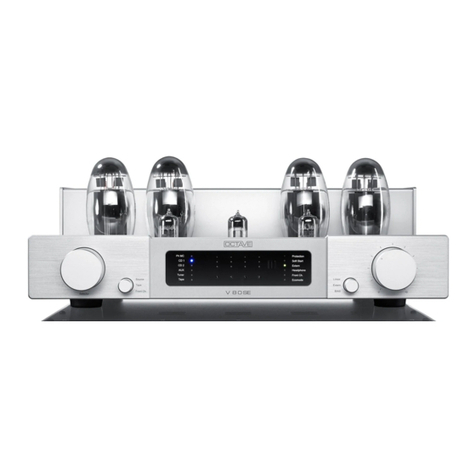7
1. DESCRIPTION OF THE V70
The V 70 is an integrated amplifier with a push-pull pentode output
stage producing approx. 2 x 70 W at 2% THD.
LOAD STABILITY Through optimization of the pentode design, we have developed a
power amplifier section with exceptional load stability. This load sta-
bility is important because the minimum impedance of modern, high
performance loudspeakers can be anywhere between 2.5 and 8
ohms. As impedances under 4 ohms are relatively common, we have
optimized our output transformers for 4 ohm loudspeakers. There is
no provision for 8 or 16 ohm outputs because:
1. There are practically no true 8 or 16 ohm loudspeakers being
made any more.
2. A properly optimized output transformer with additional tappings
would make the design very complex and would also add unneces-
sarily to the cost. It is not harmful to drive an 8 ohm loudspeaker from
a 4 ohm output. The amplifier simply delivers slightly less power into
an 8 ohm load.
ELECTRONIC
STABILIZATION The really new feature of the V 70 is the electronic stabilization of the
preamp power supply .
Because of the high voltages involved, the technology is highly so-
phisticated. First used in the Jubilee monoblocs, this technology is
particularly beneficial to the sound quality of smaller amplifiers. Inter-
action of the power amplifier with the sensitive input stages is elimi-
nated. The sound gains more silence, without any sense of edginess
- an effect normally only achieved with "giant" power supplies. Bass
reproduction also gains in authority.
POWER
MANAGEMENT Preamplifier stabilization is integrated with the electronic soft start
surge control (power management).
Soft start - ramping up of the heating and supply voltage at turn-on -
is
extremely important for the life and the sound performance of the
tubes. It also relieves the power supply components of the strain of
handling huge surge currents at turn-on.
During start-up, the Wait LED lights up on the front panel. When it
goes out, the amplifier is ready for use. Soft start is also activated
whenever there are strong fluctuations in the supply voltage, such as
may occur during thunderstorms.
PROTECTION
SYSTEM Many manufacturers fail to incorporate electronic or even passive
protection systems in their tube amps, which means that the life - and
indeed the operational safety - of these amplifiers is greatly depend-
ent on factors over which the user has no control.
We refuse to leave safety and service life to chance.
OCTAVE fits its power amplifiers with an electronic protection system
as a matter of course.
